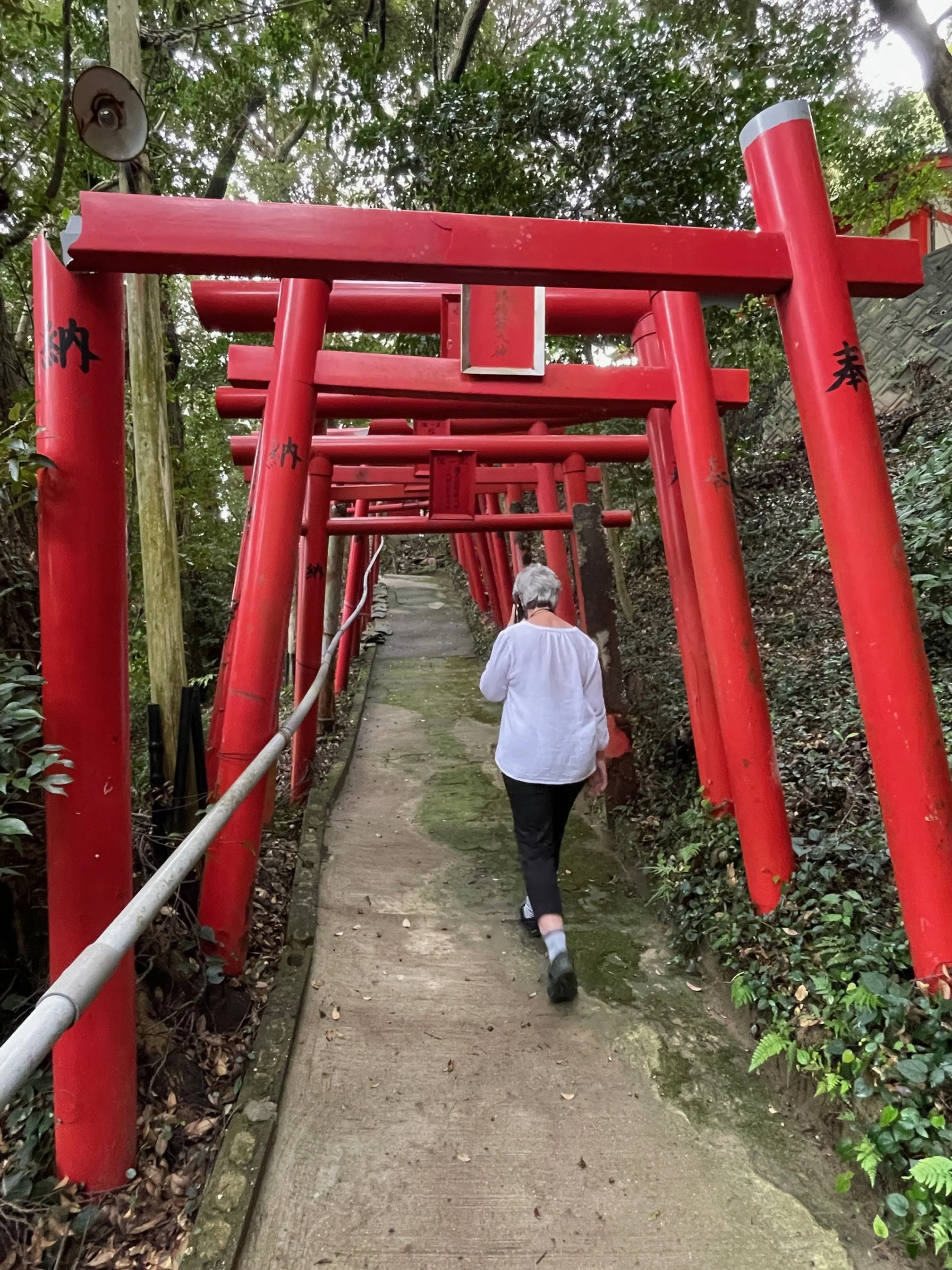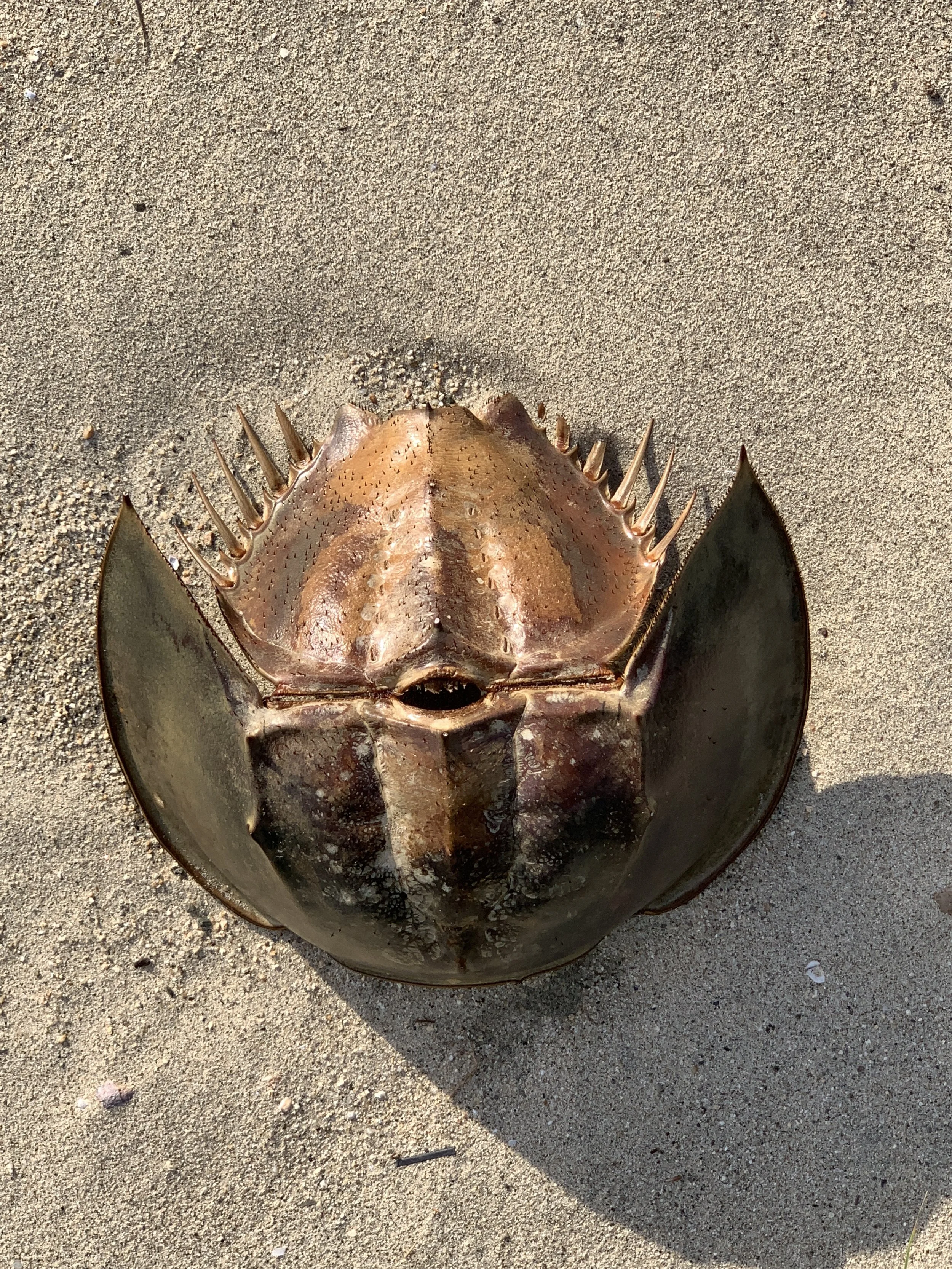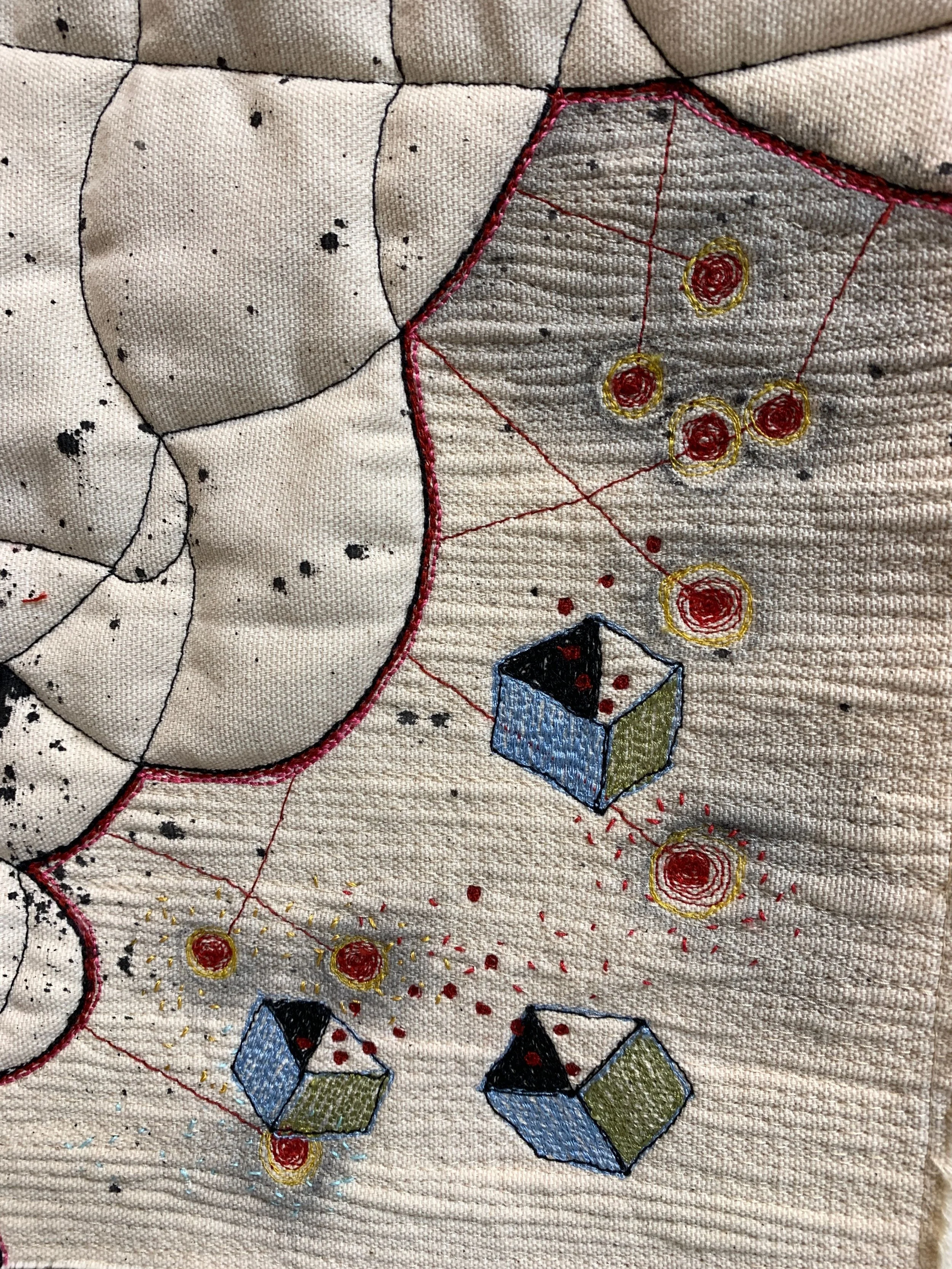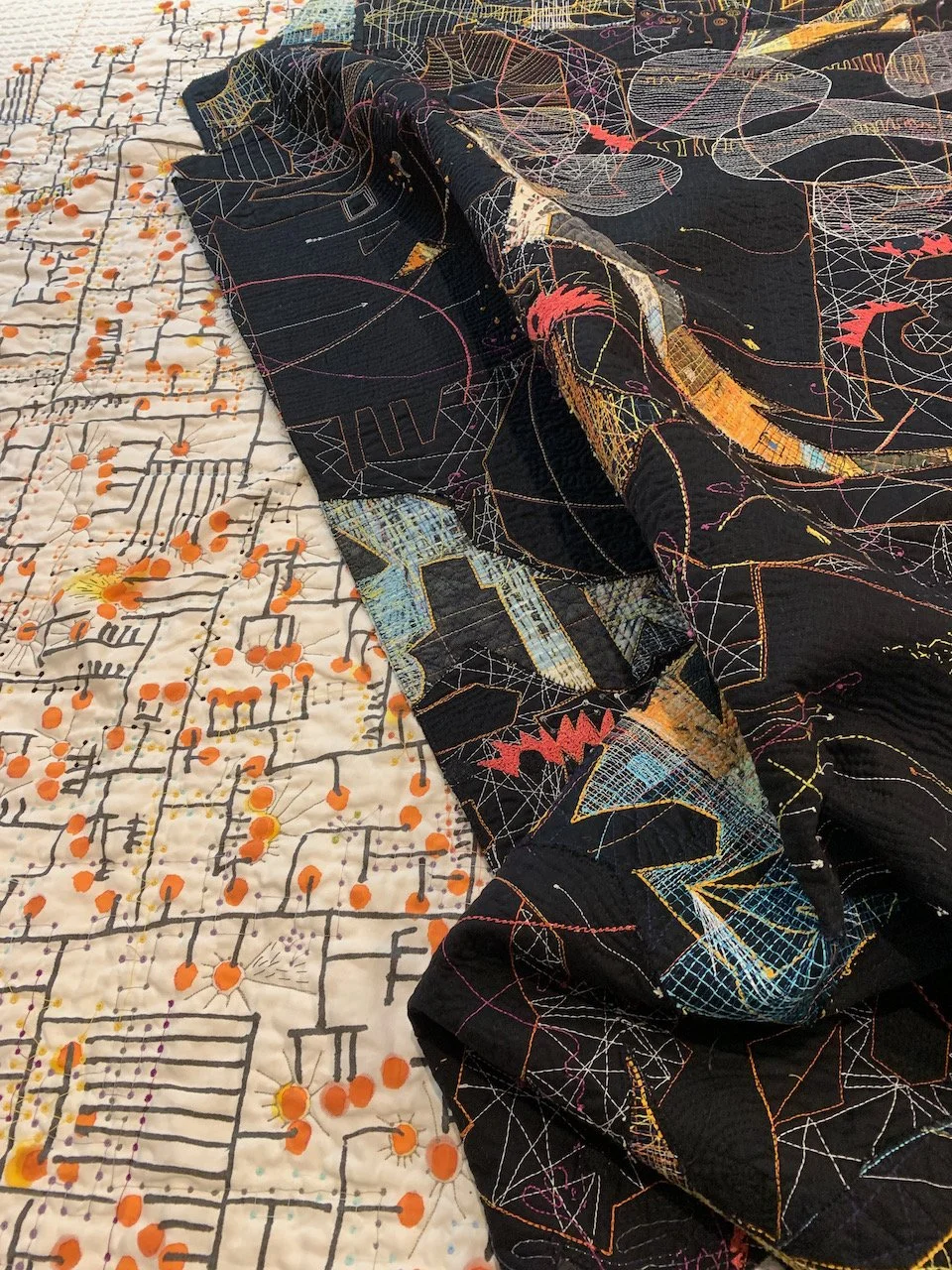Hand stitching slows down life. It is a finishing stage of my work. The added texture, detail and color creates a nuanced meaning to the work. It requires a higher level of concentration. There are two pieces in my studio that require this level concentration now.
Hive
For over a year this piece has developed into a study in consciousness, serendipity and connections. It is an assemblage of cast offs and stitching that weaves across the surface in chaos. For the last month it has stared down at me with a level of confusion that stopped the work. It was too chaotic, too disjointed. And, because I decided a while back that it needed to be a two-sided piece the complication of that made me a little dizzy. If I added an element on one side it affected the other. So it stopped.
Then, just as I was leaving for a bike trip with friends, I had an AHA! moment. I realized I needed something that would tie it all together, knitting the elements into one organism, back and front.
Thus was born a hive pattern. Hand-stitched over the chaos, through both front and back.
The 50m orange-red top-stitching thread glows on the dark side of this piece.
The same orange-red thread on the light side of the piece is more graphic. The color stands out in some areas but disappears in others. Two inch hexagons create mini frames of details in the piece.
Immigration
The flag quilt is getting its layer of hand stitching in a different way. The gnarled, intertwined texture of the stitches is defining patterns of growth, migration and connections. I think of mending when I work on this piece. Mending the edges of communities, mending the rawness of connections.
Slowing down time allows calm and supports meaning. I recommend it.































